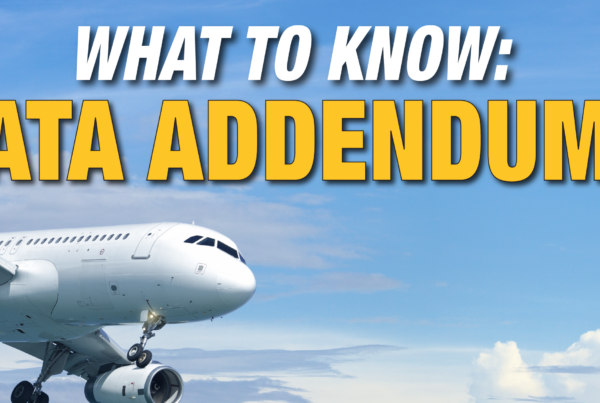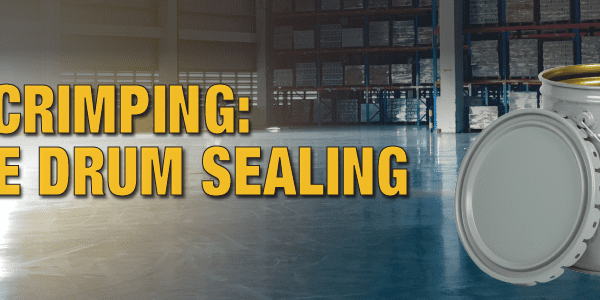Remember those wonderful days when you could just go into a store and buy hand sanitizer? Does it seem like an age ago? Well PHMSA (the U.S. Pipeline and Hazardous Materials Safety Administration) is working to help make those times return.
The shortage of hand sanitizer is due primarily, of course, to the vast increase in demand after the outbreak of the novel coronavirus (COVID-19). So why don’t we just ramp up production? Unfortunately, it’s not that easy. Sanitizer is made from the industrial alcohols ethanol and isopropanol, and the producers are now strained to the limit. However, various suppliers are taking ingenious options, such as distillers of beverage alcohol switching over to industrial manufacturing for the duration of the crisis, or repurposing other preparations. So, sanitizers are still being made. The problem then is getting them to their end destination.
Alcohol-based sanitizers are hazardous materials for transport – usually, flammable liquids in Packing Group II. Fortunately, consumer-sized bottles up to one liter can be transported as Limited Quantities under the Hazardous Materials Regulations of 49 CFR. This eliminates nearly all requirements except for the marking of the package as a limited quantity. But for industrial/institutional use, these bottles are a very inefficient way of transport. Hospitals, travel hubs and so forth need pails, drums, or even totes (intermediate bulk containers) of the substance. Unfortunately, hazmat-certified (UN specification) versions of these packagings are expensive and in short supply. This is creating a bottleneck in the path to the people who need the sanitizers.
PHMSA has addressed the issue in a “Relief Notice for the Transportation of Hand Sanitizer During COVID-19 Emergency,” found at https://www.phmsa.dot.gov/news/temporary-relief-notice-transportation-hand-sanitizer-during-covid-19-emergency. This notice established the following simplified transport requirements for hand sanitizers made from no more than 80% ethanol or isopropanol:
- All packagings must be leak tight and securely closed, secured against shifting, and protected against damage.
- The rules for packagings up to 8 gallons (36 liters) are quite simple:
- Combination packages (bottles in outer boxes) do not have to be UN specification.
- Inner containers in combination packages cannot exceed 1 gallon (3.78 L).
- Inner packagings must be secured and cushioned within the outer packaging.
- The outer packaging and any overpacks used must be marked with the company name and the words “Sanitizer – Contains Ethyl Alcohol” or “Sanitizer – Contains Isopropyl Alcohol”.
- If the above conditions are met, no additional marking or labeling is required, no hazmat shipping paper is needed, and no placards are required for any size shipment.
- For single packagings, such as drums and pails, up to 8 gallons:
- Packages do not have to be UN specification, but they must be overpacked, using crates, cages, carts, boxes or similar.
- Packages must be secured in the vehicle such that they will not shift, move, or break. They must be loaded with closures upright.
- The outer packaging and any overpacks used must be marked with the company name and the words “Sanitizer – Contains Ethyl Alcohol” or “Sanitizer – Contains Isopropyl Alcohol”.
- Again, if the above conditions are met, no additional marking or labeling is required, no hazmat shipping paper is needed, and no placards are required for any size shipment.
- Combination packages (bottles in outer boxes) do not have to be UN specification.
However, PHMSA says it is “aware that there may be a need to transport quantities greater than 8 gallons per package, for example, in drums or other packagings”. So, there will be more limited relief for larger containers (greater than 8 gallons up to 119 gallons (450 liters)) as follows:
- The packagings must be leak tight and securely closed, secured from movement on the vehicle, and protected against damage.
- The packaging must be a DOT or UN specification packaging (drum, jerrican, etc.) approved for at least PG II performance level (that is, marked as X or Y-rating in the certification code)
- Each individual package must display the Class 3 hazard label, but the UN number and shipping name are not required.
- The bill of lading or shipping paper must include the following basic description: “UN1897, Alcohols, n.o.s., Class 3, PG II.”
- The entry for the sanitizer must also include the number, type and capacity of packages offered (for example, “25 drums – 119 gallons each”)
- A copy of the Emergency Response Guidebook (ERG) Guide number 127 must accompany the shipment. If you don’t have a hard copy of the ERG, it’s available for free download from PHMSA at https://www.phmsa.dot.gov/sites/phmsa.dot.gov/files/docs/ERG2016.pdf. You can then print out Guide 127 and attach it to your normal shipping papers.
- Placards must be provided for shipments of 1001 pounds or more (454 kg).
- Employers must train shippers, carriers and receivers with specific training materials provided by PHMSA. Unfortunately, the link to this material hadn’t been posted in the original document, but should be available shortly on the PHMSA website.
- For these larger packagings, the rules under Federal Motor Carrier Safety Requirements of 49 CFR section 177.804 still apply. These involve issues such as the requirement for a Commercial Driver’s License with hazmat endorsement for placarded shipments.
Note that these provisions apply to highway transport only, not shipments by rail, water or air.
A question many have is would shipments under these provisions be acceptable for shipment into Canada or other countries. This isn’t clear yet, but since Canada doesn’t have a similar provision, it’s likely that these shipments would be considered out of compliance with Canada’s Transportation of Dangerous Goods Regulations (TDG) since the notice isn’t really an “exemption” (equivalency certificate in Canada) as addressed in TDG section 9.1(3). We recommend any shipper who wants to use these provisions for shipment into (or out of) Canada to contact Transport Canada directly to confirm whether or not it would be considered acceptable. Also, keep watch on Transport Canada’s update page (https://www.tc.gc.ca/eng/tdg/safety-menu.htm) to see if they may be issuing a similar provision for Canadian use.
ICC The Compliance Center remains open to provide needed support to the transport industry. Check our website for supplies, or call us here at 888-442-9628 (U.S.) or 888-977-4834 (Canada) if you need assistance with regulatory issues.
We have all the products you need to ensure you’re complying with regulations around the transportation of hand sanitizers:
Limited Quantity ‘Y’ Label, 4″ x 4″, Gloss Paper, 500/Roll
Hazard Class 9 – Miscellaneous Hazardous Material, 4″ x 4″, Gloss Paper, Non-Worded, 500/Roll
Hazard Class 3 – Flammable Liquid, 4″ x 4.75″, Gloss Paper, Non-Worded Proper Shipping Name Label, Blank, 500/Roll
Limited Quantity Label, 4″ x 4″, Gloss Paper, 500/Roll






